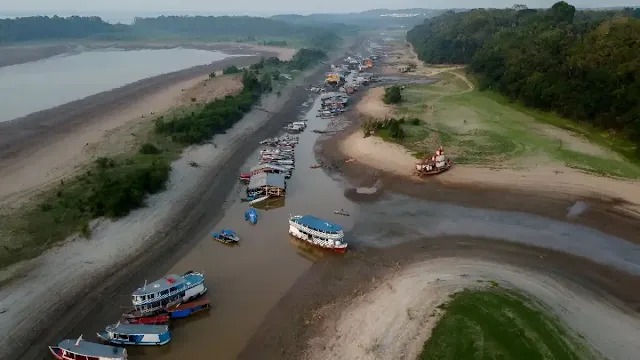In a seminal study, researchers from the World Weather Attribution (WWA) group posit that climate change stands as the primary catalyst behind the severe drought witnessed in the Amazon last year. This drought, with its far-reaching consequences including extensive fires, diminished river levels, and adverse impacts on wildlife, has prompted significant concern among scholars and policymakers alike.
Contrary to the initial attribution of the El Niño weather event to the drought, the WWA study, unveiled this past Wednesday, unequivocally attributes human-made climate change—stemming from pollution—as the chief instigator. The research team's findings indicate that climate change has increased the probability of the drought by an alarming 30 times during the period from June to November 2023, heightening apprehensions about the Amazon's proximity to a pivotal threshold with far-reaching climatic implications.
Scientists express a dual concern, pointing to the potential compounding effects of climate change and deforestation on the drying and warming trends in the Amazon. This dual threat raises the specter of a swift transformation of the region from a tropical forest into a savannah, with dire consequences for the Amazon's carbon sequestration capacity.
The Amazon assumes a critical role in the global fight against climate change due to its substantial carbon storage. Professor Regina Rodrigues emphasizes the Amazon's potential as either an ally or a hindrance in our collective struggle against climate change.
Since the mid-2023 onset, the Amazon has grappled with an acute drought marked by reduced rainfall and elevated temperatures. Lower river levels have triggered logistical challenges and compromised basic needs, manifesting in crop failures, food shortages, and water scarcity.
Employing sophisticated weather data and computer models, the study draws a parallel between the present climate and the pre-industrial era, noting a 1.2-degree Celsius temperature rise. Results underscore that climate change amplifies the likelihood of low rainfall tenfold and exacerbates agricultural drought risk by 30 times.
Despite the categorization of the current drought as a once-in-50-year event, researchers caution that under a 2-degree Celsius global warming scenario, the Amazon may contend with such conditions roughly every 13 years.
Prominent climate scientist Friederike Otto expresses profound concern, underscoring the confluence of climate change and deforestation as pivotal challenges for critical ecosystems globally. She stresses the imperative of choices made in 2024, contending that we are at a crossroads where decisions to persist with environmentally harmful practices or swiftly transition to clean, renewable energy will shape the trajectory towards a more sustainable future.
